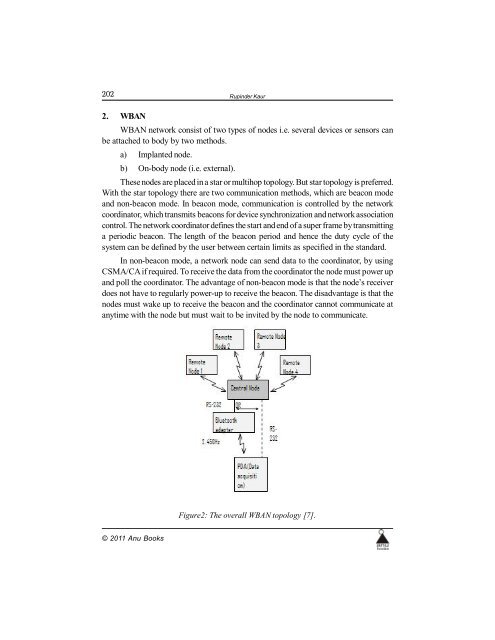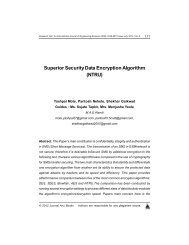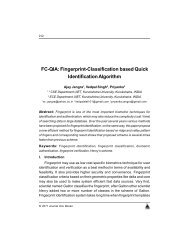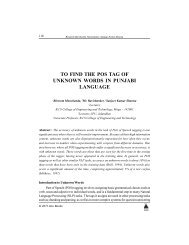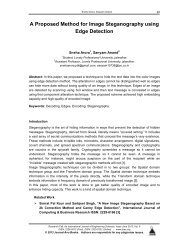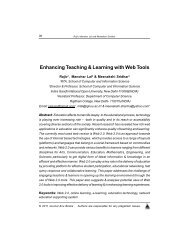Wireless Body Area Network & Its Application - Ijoes.org
Wireless Body Area Network & Its Application - Ijoes.org
Wireless Body Area Network & Its Application - Ijoes.org
Create successful ePaper yourself
Turn your PDF publications into a flip-book with our unique Google optimized e-Paper software.
202<br />
Rupinder Kaur<br />
2. WBAN<br />
WBAN network consist of two types of nodes i.e. several devices or sensors can<br />
be attached to body by two methods.<br />
a) Implanted node.<br />
b) On-body node (i.e. external).<br />
These nodes are placed in a star or multihop topology. But star topology is preferred.<br />
With the star topology there are two communication methods, which are beacon mode<br />
and non-beacon mode. In beacon mode, communication is controlled by the network<br />
coordinator, which transmits beacons for device synchronization and network association<br />
control. The network coordinator defines the start and end of a super frame by transmitting<br />
a periodic beacon. The length of the beacon period and hence the duty cycle of the<br />
system can be defined by the user between certain limits as specified in the standard.<br />
In non-beacon mode, a network node can send data to the coordinator, by using<br />
CSMA/CA if required. To receive the data from the coordinator the node must power up<br />
and poll the coordinator. The advantage of non-beacon mode is that the node’s receiver<br />
does not have to regularly power-up to receive the beacon. The disadvantage is that the<br />
nodes must wake up to receive the beacon and the coordinator cannot communicate at<br />
anytime with the node but must wait to be invited by the node to communicate.<br />
Figure2: The overall WBAN topology [7].<br />
© 2011 Anu Books


